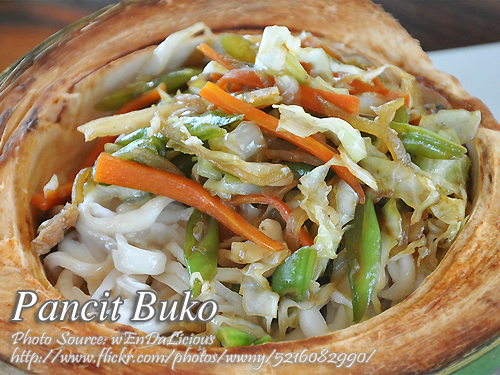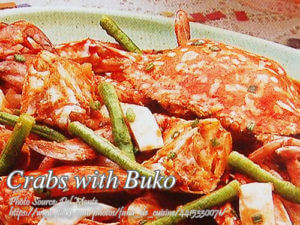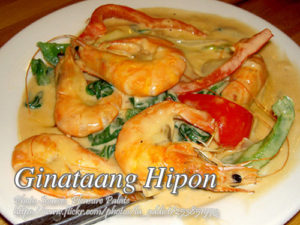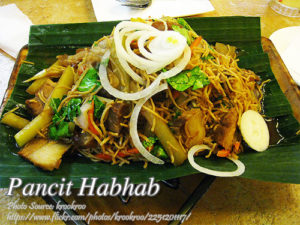Stir fried noodles or locally known as “pancit” has many varieties with regard to the noodles used. For instance pancit bihon which uses rice noodles, pancit canton that uses fried egg noodles or sometimes vermicelli or sotanghon is used in making pancit. But there is a creative variety of pancit that uses strips of young coconut meat or buko instead of noodles. Below is a recipe of pancit buko which you can try if you want to be adventurous in your cooking.
Pancit Buko: Taste of Tradition with a Twist
Pancit is indeed one of the staple dishes that Filipinos have religiously enjoyed for generations. Almost all regions and households have their versions. It could be pancit bihon consisting of thin rice noodles or pancit canton with its wide, egg noodles. There is always something appealing about a plateful of stir-fried goodness, but how beautiful is it if there is a whole noodle dish comprised of strips of buko? It sounds a bit strange at first, but it tastes just as savory, or if you may say, even better, with the subtle sweetness of young coconut. I learned this tasty dish from my Auntie Lita, who cooked it during the family reunions in Laguna. What I find interesting about my aunt is that despite the clear traditional flavors being there, she was able to jazz it up, which of course also applies to this dish.
A Creative Take on a Filipino Classic
The use of young coconut meat as a noodle substitute is really one concept that embodies the creativity of Filipino cooking. My cousin, Rodel, who is a chef in Cebu, once explained to me how much the locals there love using fresh, abundant ingredients from the island. A very clever idea, considering the thought of such a use for buko meat strips to approximate noodles is practical, especially in areas where coconut is already easily available. Light, refreshing, and yet hearty enough to satisfy.
I wasn’t quite sure what to expect. Substituting the usual noodles with something as fragile as coconut meat seemed risky. But after Auntie Lita made this dish in a snap, I was converted. The buko makes an absolute sponge of all the terrific flavor coming into the broth and seasonings, creating something that’s both familiar and excitingly new.
A Travel to Laguna: Where First I tasted This Meal
I remember all our trips to Laguna for the purpose of visiting relatives during summer. Food was always part of the fun on those visits. Whether espasol had been cooked fresh in our village or if it was freshly caught tilapia from the lake nearby, there was always something sumptuous that was waiting for us. It was on one of those trips that Auntie Lita first introduced her version of this coconut pancit to us.
She also had a small stand by the roadside where she sold kakanin and other delicacies, but only for special family visit, she did something special. I still remember how she stood by the stove, the scent of garlic and onions filling the air as she expertly sautéed the shrimp and chicken. Her secret, she insisted, was to season with just the right amount of patis-fish sauce-for that unmistakable umami flavor. She would then simmer in the young coconut meat, allowing the coconut to soak up that savory broth.
How to Cook This Delicious Recipe
This recipe is not as complicated as it seems. In fact, if you’ve ever made any sort of pancit, the steps are pretty familiar. You sauté garlic and onions in hot oil. The smell from this alone is enough to make anyone’s mouth water! Then you toss in the shrimp and chicken. My uncle, Mang Cesar, once told me that the secret to succulent shrimp is not to overdress them, so do take it into consideration when you proceed.
Once you have the seafood and chicken cooked, prepare to add the chicken broth. Let it simmer for at least 10 minutes in order to get the taste blended. Once the vegetables are tender, hold a portion aside for later use. This you will use to garnish your dish at the end to give it a beautiful presentation. The final touch, of course is the grated buko. Stir it in and cook it for a few more minutes, just enough to heat everything through. And when done, serve the dish on a large plate and top it with the reserved sautéed vegetables.
The sauce is so simple: you just need the unassuming patis, calamansi juice, and that’s it. The taste of the coconut meat is so well compensated by the sourness that just makes one fall in love with it.
A Traditional Dish for Today’s Needs
Of course, pancit in all its forms boasts a very proud history in the Philippines. Since it has long been introduced to us by the Chinese ages ago, it became more like a celebratory dish and can mean so much as in ‘being part of community’. Whether it is a birthday party, a town fiesta, or just a casual family gathering, pancit is sure to be on the table. The idea of making it with buko, however, is a relatively new twist, one that really showcases the ingenuity and creativity of Filipino cooks.
What I love most about this dish is that it really closely reaches the real essence of pancit while offering something unique. In a way, the buko also provided texture and flavor that ordinary noodles cannot. It is light, slightly sweet, with savory shrimp, chicken, and vegetables to balance out the flavors.
This is Healthy and Gluten-Free Alternative
This dish, having a healthier and gluten-free aspect, cannot go wrong. Unlike most traditional noodles made out of rice or wheat, buko contains no hint of gluten and is low in calories. It’s also a source of vitamins, minerals, and electrolytes. It can therefore be an alternative source that will brighten up the day of even the most health-conscious people and even excite anyone looking to branch out from the ordinary.
A family Recipe that is Sure to Impress
It’s one of those dishes which leaves you with memories of the great times shared with it-not only for the taste but for the memories. So, if you are an adventurous soul who wants to mix things up for a change or if you are cooking for some special occasion, do try out this recipe.
Try it on for size, and who knows? This may turn out to be that new favorite in the family, as it did in ours. For to Filipinos, it’s just how it happens–enough of the best recipes to select from are those passed down from generation after generation, each cook adding a new special touch.
How to Cook Pancit Buko
Ingredients
- 3/4 cups grated young coconut meat or buko
- 1 pc large chicken breast boiled and flaked
- 1/4 kilo shrimps shelled
- 1 pc large onion sliced
- 4 cloves garlic minced
- 1 pc carrot sliced into thin strips
- 10 pcs. stringbeans sliced 1 inch long diagonally
- 1 cup shredded cabbage
- 1 tsp. MSG
- 1 1/2 cups chicken broth
- 2 Tbsp. patis or fish sauce
- salt to taste
- 2 Tbsp. chopped kinchay or Chinese celery
- 2 Tbsp. cooking oil
Instructions
How to cook pancit buko:
- Saute garlic in hot oil. Add onion.
- Then, stir in shrimps and chicken. Season with patis.
- Cook for another 3 minutes, then, pour in chicken broth.
- Simmer for 10 minutes and add vegetables.
- When vegetables are almost done, set aside 1 cup for topping.
- Add grated buko in pan. Stir and cook for 5 minutes.
- Arrange pancit buko on a plate and spread the remaining sauteed mixture on top.
- For the sauce: patis and calamansi juice.
Notes
Cooking Tips:
Use Fresh Young Coconut for Best Results
When preparing this recipe, you must use fresh, young coconut meat, which is soft and tender. Fresh buko would be sweet but not overpowering, and its taste would lighten the flavour of this dish. You should not use older coconuts for this recipe as their meat is harder and less flavoured than a young coconut's.Do Not Overcook the Shrimps
Since shrimps cook so quickly, do not overcook them because it easily turns them into rubbery and tasteless shrimps, especially since their natural sweetness will form much of the balancing flavors in this dish. Add them towards the end of cooking and remove them from the pan as they begin to color pinkish.Simmering the Broth for Maximum Flavor
Let the chicken broth simmer for at least 10 minutes. Then add the vegetables and coconut strips. It is only then that you will allow all the flavors from the shrimps, chicken, and seasonings to meld well into the broth. The rich, savory liquid would be able to soak into the buko, and every bite would be more flavorful.





